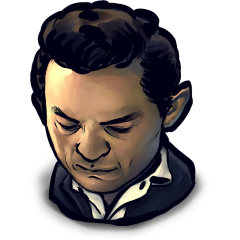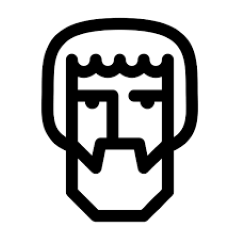BEHS 364 Final Exam Complete Solutionination instruction and answer
BEHS 364 SEC 6382 SEM 2152 Final Examination
Alcohol in U. S. Society UMUC 2015
Match Questions – 4 points each
1. The public response to excessive drinking has been a mix of two general approaches:
a. Directly reduce drinking + restrict availability/raise prices
b. Indirectly reduce drinking + increase availability
c. Directly reduce drinking + lower price
d. None of the above
2. The “neo-prohibitionists”:
a. Are comprised of economists, epidemiologists, and other scientists doing research on the causal effects of alcohol-control measures on drinking, abuse, and consequences
b. Present the case that the price and availability of alcohol affect the amount of alcohol-related harm to society
c. Both a and b
d. Neither a or b
3. Early in U.S. history, Alexander Hamilton proposed a ____________ to decrease heavy drinking
a. Prohibition
b. A whiskey tax
c. Abstinence
d. None of the above
4. During the 1930’s a new scientific understanding of alcoholism shifted the focus to:
a. Alcohol itself
b. Morality
c. The small fraction of the population vulnerable to alcoholism
d. None of the above
5. Dr. E. M. Jellinek was a researcher that:
a. Is considered the godfather of the alcoholism movement
b. Identified small portions of the population vulnerable to alcohol
c. Suggested that someone with the innate propensity for alcoholism would actually develop the disease depends in part on living in an alcohol wet or dry environment
d. All of the above
6. Just like tobacco:
a. A small increase in tax would have a small effect on the public health
b. A large increase in tax would have a large effect on the public health
c. Both a and b
d. Neither a or b
7. Drinkers are:
a. Better educated, richer, less ambivalent
b. Poorly educated, poorer, ambivalent
c. Exactly the same
d. None of the above
8. Prohibition or the 18th Amendment:
a. Promoted a substantial reduction in drinking
b. Was a political failure
c. Was repealed by Constitutional Amendment
d. All of the above
9. Federal funding for research and treatment of alcoholism expanded and became institutionalized with the creation of :
a. Alcoholics Anonymous (AA)
b. National Institute on Alcoholism and Alcohol Abuse (NIAAA)
c. Narcotics Anonymous (NA)
d. None of the above
10. Today, the American public is mostly drinking:
a. Liquor
b. Beer
c. Wine
d. All of the above equally
11. Today, the “neo-prohibitionist” label suggests people that:
a. Are moralistic and naïve
b. Seek to reduce alcohol abuse by advocating controls on supply and higher taxes
c. Promote deregulation
d. Both a and b
12. The first internal revenue measure instituted by the 1st United States Congress was a tax on:
a. Wages
b. Liquor
c. Land
d. Tea
13. At the time of the Civil War liquor was used for:
a. Drinking
b. Fluid for lamps
c. Industrial products
d. All of the above
14. The most politically effective organization working for Prohibition was:
a. Alcoholics Anonymous
b. Anti-Saloon League
c. League of Women Voters
d. Al-Anon
15. The national prohibition was popularly known as the:
a. Volstead Act
b. Wilson Act
c. Webb-Kenyon Act
d. Reed Act
16. The Volstead Act banned the ________________ of alcohol.
a. Purchase
b. Possession
c. Consumption
d. Manufacture and sale
17. Enforcement of the Volstead Act was done by:
a. Congress
b. President
c. Treasury Department
d. Homeland Security
18. The economist Clark Warburton claimed that during Prohibition there was a reduction in he overall consumption of ethanol coupled with a substitution of liquor for beer based on :
a. Agricultural sources
b. Death rates from alcohol related causes of production
c. Arrests for drunkenness
d. All of the above
19. The class of people that maintained the same level of drinking throughout Prohibition was:
a. Middle and Upper class
b. Working class
c. Poor
d. None of the above
20. Under the 21st amendment the states took the lead in regulating alcohol:
a. Excise taxes
b. Tax collection
c. Distribution and sales
d. Both a and b
21. The most successful self-help organization of our time is:
a. Alcoholics Anonymous
b. Narcotics Anonymous
c. Al-Anon
d. Marijuana Anonymous
22. The co-founders of Alcoholics Anonymous were:
a. Bill Wilson and Dr. Bob Smith
b. Carl Jung and William James
c. John D. Rockefeller Jr. and Pierre S. DuPont
d. None of the above
23. E. Morton Jellinek:
a. Identified 5 varieties of alcoholism
b. Wrote “The Disease Concept of alcoholism”
c. Offered a science-based understanding of alcoholism
d. All of the above
24. Jellinek reserved the disease label for those alcoholics:
a. Who evidenced dependence by an inability to stop drinking once started
b. Who had an inability to refrain from starting to drink
c. Who practiced controlled drinking
d. Both a and b
25. ______________ was another proponent of the disease model who suggested that uncontrolled, maladaptive ingestion of alcohol is not a disease in the sense of a biological disorder; rather alcoholism is a disorder of behavior:
a. George Vaillant
b. E.M. Jellinek
c. Stanton Peele
d. Herb Finagarette
26. A procedure reserved for those that require medical help to mitigate severe withdrawal symptoms is:
a. Relapse prevention
b. Detoxification
c. Liver transplant
d. None of the above
27. The case for a genetic basis to alcoholism is strengthened by the observation:
a. Identical twins are more alike with respect to the presence or absence of alcoholism than are fraternal twins
b. Fraternal twins are more alike with respect to the presence or absence of alcoholism than are identical twins
c. Identical and fraternal twins are equally alike with respect to the presence of alcoholism
d. Identical and fraternal twins are equally alike with respect to the absence of alcoholism
28. Inpatient rehabilitation programs
a. Are the most costly and highly structured
b. Traditionally last 28 days
c. Include group therapy, individual therapy, and education
d. All of the above
29. Project Match was an evaluation study that:
a. Involved a 12 week period of individual outpatient sessions
b. Randomly assigned patients to 1 of 3 approaches
c. Evaluated cognitive-behavioral, motivational enhancement, and 12 step facilitation therapies
d. All of the above
30. The alcoholism movement engendered a research program that:
a. Seeks to identify individual characteristics that create susceptibility to alcohol problems
b. Develop effective treatments
c. Obtain federal funding
d. Both a and b
31. An intrinsic limitation to the medical approach is that:
a. It is not only alcoholics that cause and suffer abuse by their drinking
b. No treatment requires voluntary compliance
c. Prevention drugs are always effective
d. All of the above
32. Quantification is essential to:
a. Assessing the scope, pattern, and trends of drinking
b. Evaluating particular interventions intended to reduce problematic drinking
c. Both a and b
d. Neither a or b
33. From a population-health perspective:
a. Data on overall alcohol sales is irrelevant
b. Data on the entire distribution of consumption is of interest
c. Neither abstinence or heavy drinking have health implications
d. All of the above
34. 80 proof whiskey is:
a. 8% alcohol
b. 80% alcohol
c. 40% alcohol
d. 100% alcohol
35. Generally, it is easier to estimate ____________ consumption with some degree of accuracy
a. Individual
b. The distribution of individual drinking
c. Aggregate
d. None of the above
36. Problems with using tax records as the basis for estimating alcohol consumption include:
a. No account of wastage
b. Illicit production for sale (moonshine)
c. Tourists
d. All of the above
37. The 2001-2002 National Epidemiologic Survey on Alcohol and Related Conditions (NESARC) provided an estimate of pro capita consumption that vis about __________ of recorded pro capita sales:
a. Half
b. Double
c. Equal
d. None of the above
38. Prudent users of survey data:
a. Check data with other surveys, sales data, and other benchmarks
b. Trust but verify
c. Proceed with certainty in their data alone
d. Both a and b
39. The prevalence of drinking peaks in the early ________ for both males and females:
a. Teens
b. 20’s
c. 30’s
d. 40’s
40. People in _______ health are more likely to drink:
a. Poor
b. Fair
c. Good
d. All of the above
41. In classical liberal thought, a choice is of greater public concern if the resulting harm is to:
a. The person making the choice
b. Bystanders
c. Society overall
d. Both a and b
42. The public health perspective attempts to:
a. Distribute specific benefits to identified individuals
b. Improve the level or rates of health among the entire population or specific groups
c. Both a and b
d. Neither a or b
43. Public health stands closer to a __________ ethic of social justice
a. Communication
b. Individualistic
c. Liberal
d. Conservative
44. The sale of cold beer to drivers generates a ________ externality to the extent that it increases the chance that people who share the road with the beer buyer ( and drinker while driving) will collide with the buyer:
a. Neutral
b. Positive
c. Negative
d. Zero
45. A wide array of experiments document that ____________ of consequence occurrence seems to contradict the presumption of a rational choice
a. Severity
b. Timing
c. Order
d. Lack
46. Self control is a matter of:
a. Willpower
b. Experience
c. Technique
d. All of the above
47. The liberal tradition embodied in the harm principle claims to promote the greatest good by:
a. Leaving the adult individual free to make his own choices as long as others are not harmed
b. Promoting improvement of choices by government regulation
c. Denies the intrinsic value of freedom
d. None of the above
48. _____________ measures are aimed at reducing the harmful consequences of some unhealthy or unsafe activity
a. Government regulation
b. Harm reduction
c. Public policy
d. Abstinence
49. Information provision includes:
a. Warning labels on alcoholic beverages
b. Public service ads on television and radio
c. Alcohol curriculums in school health classes
d. All of the above
50. The Cost of Illness (COI) method:
a. Is the norm in government reports
b. Distinguishes between direct costs and indirect costs resulting from loss of productivity
c. Is implicitly based on the maximization of society’s present and future production
d. All of the above
51. The Willingness to Pay (WTP) method contends:
a. The value of a persons life and health is measured by the value placed on enjoying a safe environment
b. Enjoyment is subjective and involves decisions that require judgment about the value of small increases or reductions in the probability of death
c. Both a and b
d. Neither a or b
52. Among the causes of death and disability associated with drinking, __________ disproportionally young adults
a. Heart disease
b. Cirrhosis of the liver
c. Traffic accidents
d. Brain damage
53. The beer industry contends that it:
a. Directly and indirectly employs approximately 1.78 million Americans with 54 billion in wages and benefits
b. Has an economic ripple effect that benefits packaging manufacturers, shipping companies, agriculture, and other business’s that depend on it
c. Both a and b
d. Neither a or b
54. The brewing industry actively supports a rollback of the 1990 excise tax increase to:
a. Provide relief for the lower and middle classes
b. Allow brewers and wholesalers to expand and hire more workers
c. Boost the American economy
d. All of the above
55. The economist Gary Beaker defined the optimal crime rate as:
a. Zero crime
b. The rate associated with a balancing of marginal costs and benefits of law enforcement
c. Both a and b
d. Neither a or b
56. An example of a harmful consequence of alcohol misuse beyond the reach of a targeted consequence oriented approach is:
a. Organ damage from chronic excess drinking
b. Drinking while driving
c. Domestic violence
d. Child abuse
57. In reference to alcohol control measures, the federal government:
a. Licenses and collects excise taxes from importers and manufacturers
b. Monitors product purity
c. Polices illegal production and trafficking
d. All of the above
58. America is predominately a __________ drinking country.
a. Beer
b. Wine
c. Liquor
d. None of the above
59. In 2005, the Supreme Court ruled that states could ban direct shipment of wine:
a. For out of state producers only
b. For in state producers only
c. For out of state producers only if they did the same for in state producers
d. None of the above
60. A surprising feature of government in the liquor trade is:
a. 18 states continue to control wholesale distribution as a public monopoly
b. 5 states monopolize the retail sale of package spirits
c. Both a and b
d. Neither a or b
61. Taxes have unique advantages as alcohol-control measures since they:
a. Help control alcohol abuse and its consequences without a direct restriction on freedom of choice
b. Provide a possibility for a calibrated response to the cost of alcohol related problems by being set high, low, or anywhere in between
c. Enhance public revenues
d. All of the above
62. In recent years the U.S. Congress has set alcohol taxes:
a. Far lower than previously
b. Far higher than previously
c. About the same as previously
d. None of the above
63. Federal and state excise taxes:
a. Are unit taxes defined in terms of volume rather than product value
b. Are paid by the manufacturer or distributor
c. Have no automatic inflation protection
d. All of the above
64. Unintended consequences of increased taxes and price include:
a. Substitution from alcohol to other drugs
b. Creation of a black market for alcohol
c. Both a and b
d. Neither a or b
65. A number of empirical studies have found that alcohol and marijuana are:
a. Substitutes
b. Complements
c. Not related
d. All of the above
66. In youths the use of one illegal substance results in greater interest and opportunity to try other substances and is known as __________ phenomena:
a. Co-op
b. Either –Or
c. Gateway
d. Challenge
67. Alcohol taxes are “regressive” taxes in that:
a. On average a larger percentage of the income of poorer households goes to pay this tax than in richer households
b. On average a smaller percentage of the income of poorer households goes to pay this tax than in richer households
c. On average the same percentage of the income of poorer households goes to pay this tax than in richer households
d. None of the above
68. In the public health framework an increase in alcohol taxes is justified by:
a. A reduction in morbidity and mortality
b. No decrease in overall employment
c. Impact on alcohol industry products
d. None of the above
69. A 1985 literature summary concludes:
a. Most drinkers prefer beer and those drinkers are more likely to drink/drive
b. Beer is disproportionately preferred by higher risk groups
c. Both a and b
d. Neither a or b
70. Alcohol control is:
a. All or nothing
b. A continuum of possibilities
c. Both a and b
d. Neither a or b
71. In addition to alcohol control there are two other vital approaches for public intervention:
a. Time, place, and circumstances + harm reduction
b. Time, place, and circumstances + abstinence
c. Alcoholics Anonymous + Disease Model
d. None of the above
72. Time, place, and circumstances:
a. Include efforts to motivate people to refrain from drinking when it is likely to cause damage
b. Matters are largely dealt with through counseling and private authority
c. May require government authority for intervention in some areas
d. All of the above
73. Harm reduction:
a. Helps make the world safer for drunks
b. Has goal to ease some of the natural consequences of excessive drinking
c. Demands total abstinence
d. All of the above
74. In public opinion surveys, a large majority of the public indicate support for increasing alcohol taxes provided:
a. The revenues be used for targeted and preventive programs or some other good use
b. The revenues are a preventative measure in themselves
c. The revenues go into the general fund for all to use
d. None of the above
75. The federal government has pushed for additional restrictions on youthful drinking by:
a. Requiring campuses and military installations to enforce the minimum legal drinking age laws
b. Having states adopt zero tolerance for teen drivers
c. Both a and b
d. Neither a or b
True or False Questions – 2 points each
76. During the last half century, the public policy to reduce excessive drinking has largely neglected restricting availability and raising the price of alcohol. TRUE
77. Mothers Against Drunk Drivers (MADD) has been an ineffective influence on policy change referencing drunk drivers. False
BEHS 364 Final Exam Complete Solutionination instruction and answer Sati
BEHS 364 SEC 6382 SEM 2152 Final Examination Alcohol in U. S. Society UMUC 2015 Match Questions – 4 points each 1. The public response to excessive drinking has been a mix of two general approaches: a. Directly reduce drinking + restrict availability/raise prices b. Indirectly reduce drinking + increase availability c. Directly reduce drinking + lower price d. None of the above 2. The “neo-prohibitionists”: a. Are comprised of economists, epidemiologists, and other scientists doing research on the causal effects of alcohol-control measures on drinking, abuse, and consequences b. Present the case that the price and availability of alcohol affect the amount of alcohol-related harm to society c. Both a and b d. Neither a or b 3. Early in U.S. history, Alexander Hamilton proposed a ____________ to decrease heavy drinking a. Prohibition b. A whiskey tax c. Abstinence d. None of the above 4. During the 1930’s a new scientific understanding of alcoholism shifted the focus to: a. Alcohol itself b. Morality c. The small fraction of the population vulnerable to alcoholism d. None of the above 5. Dr. E. M. Jellinek was a researcher that: a. Is considered the godfather of the alcoholism movement b. Identified small portions of the population vulnerable to alcohol c. Suggested that someone with the innate propensity for alcoholism would actually develop the disease depends in part on living in an alcohol wet or dry environment d. All of the above 6. Just like tobacco: a. A small increase in tax would have a small effect on the public health b. A large increase in tax would have a large effect on the public health c. Both a and b d. Neither a or b 7. Drinkers are: a. Better educated, richer, less ambivalent b. Poorly educated, poorer, ambivalent c. Exactly the same d. None of the above 8. Prohibition or the 18th Amendment: a. Promoted a substantial reduction in drinking b. Was a political failure c. Was repealed by Constitutional Amendment d. All of the above 9. Federal funding for research and treatment of alcoholism expanded and became institutionalized with the creation of : a. Alcoholics Anonymous (AA) b. National Institute on Alcoholism and Alcohol Abuse (NIAAA) c. Narcotics Anonymous (NA) d. None of the above 10. Today, the American public is mostly drinking: a. Liquor b. Beer c. Wine d. All of the above equally 11. Today, the “neo-prohibitionist” label suggests people that: a. Are moralistic and naïve b. Seek to reduce alcohol abuse by advocating controls on supply and higher taxes c. Promote deregulation d. Both a and b 12. The first internal revenue measure instituted by the 1st United States Congress was a tax on: a. Wages b. Liquor c. Land d. Tea 13. At the time of the Civil War liquor was used for: a. Drinking b. Fluid for lamps c. Industrial products d. All of the above 14. The most politically effective organization working for Prohibition was: a. Alcoholics Anonymous b. Anti-Saloon League c. League of Women Voters d. Al-Anon 15. The national prohibition was popularly known as the: a. Volstead Act b. Wilson Act c. Webb-Kenyon Act d. Reed Act 16. The Volstead Act banned the ________________ of alcohol. a. Purchase b. Possession c. Consumption d. Manufacture and sale 17. Enforcement of the Volstead Act was done by: a. Congress b. President c. Treasury Department d. Homeland Security 18. The economist Clark Warburton claimed that during Prohibition there was a reduction in he overall consumption of ethanol coupled with a substitution of liquor for beer based on : a. Agricultural sources b. Death rates from alcohol related causes of production c. Arrests for drunkenness d. All of the above 19. The class of people that maintained the same level of drinking throughout Prohibition was: a. Middle and Upper class b. Working class c. Poor d. None of the above 20. Under the 21st amendment the states took the lead in regulating alcohol: a. Excise taxes b. Tax collection c. Distribution and sales d. Both a and b 21. The most successful self-help organization of our time is: a. Alcoholics Anonymous b. Narcotics Anonymous c. Al-Anon d. Marijuana Anonymous 22. Th...




Online Users
-
 Number1tutor
Today
Number1tutor
Today





A+ - Thank you!
Thanks for the positive feedback!